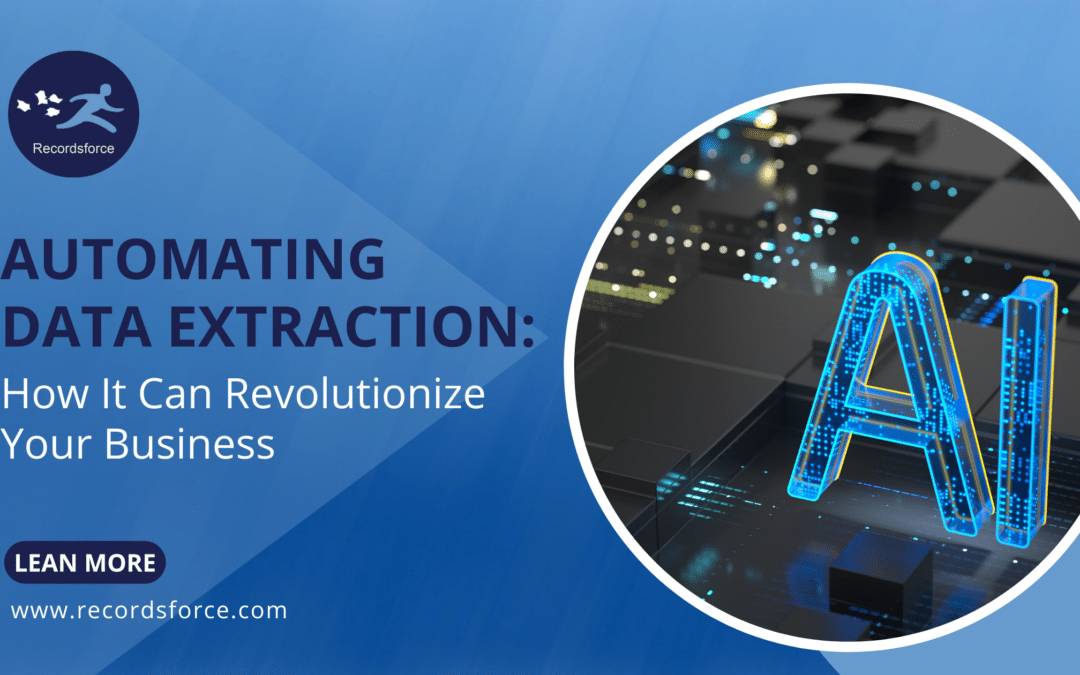Data is the key to success in today’s data-driven world, and businesses are constantly seeking ways to efficiently get their data and gain insights into their organization. Traditionally, extracting data from documents, whether they are invoices, forms, or contracts, has been a time-consuming and error-prone process. However, with advancements in technology, particularly in the field of artificial intelligence and machine learning, businesses can now automate data extraction processes, or even outsource them, leading to increased productivity, accuracy, and cost savings.
The Traditional Approach to Data Extraction
Before the advent of automation, data extraction was a manual process that involved reading through documents and entering relevant information into a database or spreadsheet. This approach was not only time-consuming but also prone to errors, as human operators could easily miss or misinterpret data. Additionally, manual data extraction was expensive, requiring businesses to allocate significant resources to hire and train personnel for the task.
The Rise of Automated Data Extraction
Automated data extraction uses software to extract data from documents quickly and accurately. This software, often powered by artificial intelligence and machine learning algorithms, can recognize and extract data from various document types, including scanned images and PDFs. By automating the data extraction process, businesses can significantly reduce the time and resources required for data entry, freeing up employees to focus on more value-added tasks. However, sometimes these software can take time to reach the accuracy needed to be less hands-on, therefore, still requiring resources to manage the data. Outsourcing the data extraction to an experienced team that uses AI and machine learning gets you the best of both worlds.
Benefits of Automating Data Extraction
- Increased Efficiency: Automated data extraction is much faster than manual data entry, allowing businesses to process large volumes of documents in a fraction of the time.
- Improved Accuracy: By eliminating human error, automated data extraction ensures that extracted data is accurate and reliable, reducing the risk of costly mistakes.
- Cost Savings: Automating data extraction can lead to significant cost savings by reducing the need for manual labor and increasing productivity.
- Enhanced Data Insights: By extracting data from documents in a structured format, businesses can gain valuable insights into their operations, helping them make informed decisions.
Use Cases of Automated Data Extraction
- Accounts Payable: Automating data extraction can streamline the accounts payable process by extracting data from invoices and feeding it directly into accounting systems, reducing the need for manual data entry.
- Customer Onboarding: Automating data extraction can simplify the customer onboarding process by extracting data from customer documents, such as identification cards and utility bills, and populating the relevant fields in onboarding forms.
- Contract Management: Automated data extraction can streamline contract management by extracting key terms and conditions from contracts and alerting stakeholders to important deadlines and milestones.
Automating data extraction can revolutionize your business by increasing efficiency, improving accuracy, and reducing costs. By leveraging the power of an outsourced data extraction service that utilizes artificial intelligence and machine learning, businesses can streamline their operations and gain valuable insights from their data. If you’re looking to take your business to the next level, consider automating your data extraction processes—it may just be the key to unlocking new opportunities and driving growth.

